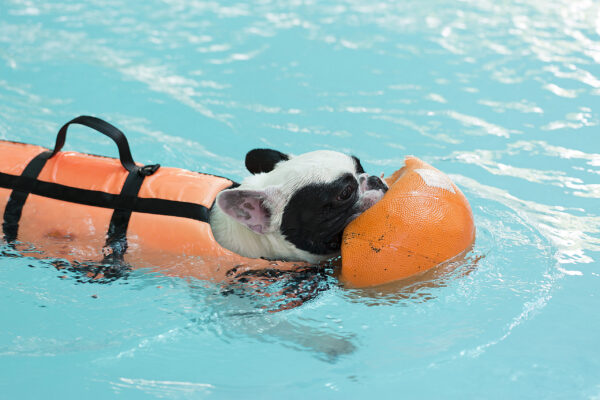As more pet owners seek gentle, whole-body approaches to health, natural and alternative therapies for animals are growing in popularity across Australia. These alternative therapies aim to support your pet’s physical, emotional, and energetic wellbeing, not just by treating symptoms, but by addressing underlying causes and promoting balance within the body.
Whether used as complementary treatment to conventional veterinary care or as part of an ongoing wellness routine, holistic therapies can offer meaningful support for chronic conditions, injury recovery, behavioural challenges, and preventative health. From massage and physiotherapy to acupuncture, herbal remedies, and energy healing, there are a wide variety of options available to suit your pet’s individual needs.
It’s important to remember that while these therapies can be incredibly beneficial, they should never replace proper veterinary diagnosis and care. Always consult your vet, ideally one with training in integrative or complementary medicine, before beginning any new therapy to ensure it’s safe and suitable for your pet’s condition.
In this guide, we explore some of the most popular and evidence-supported holistic therapies used for pets in Australia, how they work, and when they may be helpful.
Types of natural and alternative therapies for pets.

Herbal Medicine
Herbal medicine involves the use of plant-based remedies to support the body’s healing mechanisms. In pets, herbs can help with inflammation, digestive upset, liver function, anxiety, and skin issues.
How It Works:
Herbs can be administered as teas, powders, capsules, or tinctures , which are often blended into food or used topically. Some herbs work gently over time, while others have more immediate effects.
Common Uses:
- Turmeric (Curcumin): Supports joint health and reduces inflammation
- Milk Thistle: Protects the liver and supports detoxification
- Chamomile: Calms anxiety and soothes the stomach
- Calendula: Heals minor wounds and soothes skin irritation
Caution:
Some herbs safe for humans are toxic to pets (e.g. garlic, comfrey, chives). Seek advice from a veterinarian trained in herbal medicine, such as those registered with the Australian Veterinary Association (AVA) or Integrative Veterinarians Australia (IVA).
References:
- Integrative Veterinarians Australia (IVA): https://www.ava.com.au/iva
- Wynn, S. G., & Fougere, B. J. (2007). Veterinary Herbal Medicine. Elsevier.
- Purple Tree Pets : Toxic Plants For Pets

Acupuncture
Acupuncture, a practice rooted in Traditional Chinese Medicine, involves inserting very fine needles into specific points on the body to stimulate nerve pathways, enhance circulation, and promote healing.
How It Works:
The needles activate the body’s natural painkillers and anti-inflammatory responses, making acupuncture especially effective for musculoskeletal and neurological conditions.
Common Conditions Treated:
- Arthritis and joint stiffness
- Hip dysplasia
- Intervertebral disc disease
- Post-operative recovery
- Chronic pain and lameness
Acupuncture is widely accepted as a complementary treatment and is especially beneficial for senior pets or those with chronic conditions. In Australia, only veterinarians are licensed to perform acupuncture on animals.
References:
- Australian Veterinary Acupuncture Group (AVA): https://www.ava.com.au
- Schoen, A. M. (2000). Veterinary Acupuncture: Ancient Art to Modern Medicine.

Aromatherapy & Essential Oils
Aromatherapy involves using essential oils derived from plants to influence emotional and physical wellbeing.
How It Works:
When diffused into the air or used in pet-safe topical blends (under strict guidance), essential oils can help calm nervous pets, repel insects, or relieve itching.
Examples:
- Lavender: Calming, helps with anxiety and sleep
- Chamomile: Soothes the skin and reduces tension
- Frankincense: Supports immune function and inflammation
Warning:
Cats are highly sensitive to essential oils. Never apply undiluted essential oils directly to pets or allow them to ingest. Many essential oils are toxic to pets. Always consult a vet or certified animal aromatherapist before use.
References:
- Shelton, M. (2014). Animal Desk Reference: Essential Oils for Animals.
- Purple Tree Pets : Essential oil safety for pets

Flower Essences
Flower essences are natural, plant-based remedies used to support emotional balance and wellbeing in pets. They are made by infusing flowers in water and preserving the essence with alcohol or another preservative, capturing the vibrational energy of the plant rather than its chemical components.
Unlike herbal medicine, flower essences do not act on the physical body directly but are believed to gently influence emotions and moods. They are often used to help pets cope with stress, anxiety, fear, grief, trauma, or behavioural changes.
How Flower Essences Work
Flower essences work on an energetic level, aiming to clear emotional blockages and promote a calm, balanced state of mind. They can be administered orally (drops added to water or food), applied topically (to the fur or paws), or sprayed in the environment.
Common Uses in Pets
- Calming nerves during thunderstorms, fireworks, or travel
- Supporting animals after surgery, rescue, or trauma
- Reducing separation anxiety or fear-based behaviours
- Easing grief after the loss of a companion
Popular Flower Essences
- Bach Rescue Remedy: A well-known blend of five flower essences used for acute stress and anxiety relief.
- Rock Rose: Can help with panic, fear, and nightmares.
- Cherry Plum: May help with suppressed fears, potential for aggression, and outbursts.
- Impatiens: Can be helpful for restlessness, hyperactivity, and irritability.
- Mimulus: For fear of known things, like loud noises or strangers.
Safety and Considerations
Flower essences are generally considered very safe, with no known side effects or toxicity. However, they should be used as part of a holistic care plan and not replace veterinary treatment where needed. As always, consult your vet or a qualified holistic practitioner, especially if your pet has severe behavioural or health issues.
Australian Context
Flower essence therapy is gaining recognition in Australia, with some veterinarians and integrative practitioners incorporating them into treatment plans. They are available through specialised holistic pet supply stores and trained practitioners.
References:
- Bach Flower Remedies Australia: https://www.bachflowerremediesaustralia.com.au
- Flower Essence Society: https://www.fesflowers.com
- Starnes, C. (2009). The Complete Guide to Natural Healing for Dogs & Cats.

Holistic Nutrition
Holistic nutrition focuses on feeding whole, species-appropriate foods to maintain health, prevent disease, and support recovery.
How It Works:
Diets may be customised to support specific issues such as allergies, kidney disease, joint problems, or digestive disorders. Supplements (e.g. omega 3s, probiotics, kelp) may also be included to enhance health.
Types of Holistic Diets:
- BARF (Biologically Appropriate Raw Food) diets
- Cooked, whole-food meals
- Limited-ingredient diets for allergies
- Supplements like fish oil, green-lipped mussel, or probiotics
- Superfoods such as pumpkin, kelp, or blueberries
Important:
Homemade diets must be carefully balanced. Consult with a veterinary nutritionist or holistic vet to ensure the diet is balanced, safe and all nutritional requirements are met. DIY feeding without guidance can lead to nutritional deficiencies or excesses.
References:
- Freeman, L. M., et al. (2013). “Current knowledge about the risks and benefits of raw meat–based diets for dogs and cats.” JAVMA.
- Pet Food Industry Association Australia : https://pfiaa.com.au/
- Purple Tree Pets : Dog Supplements Guide

Hydrotherapy
Hydrotherapy involves exercising or performing therapeutic movements in water, usually in a heated pool or underwater treadmill.
How It Works:
Water reduces the impact of weight on joints, allowing dogs to move freely and comfortably. The resistance of water also strengthens muscles and improves cardiovascular fitness.
Common Uses:
- Post-surgical rehabilitation (e.g. cruciate ligament repair)
- Arthritis management
- Muscle atrophy or weakness
- Weight management in obese pets
Hydrotherapy centres are available throughout Australia, often staffed by qualified animal physiotherapists or hydrotherapists.
References:
- McGowan, C. M., et al. (2007). Canine hydrotherapy: A useful tool or just a fad? Veterinary Times.
- Animal Physiotherapy Group – APA: https://australian.physio

Massage Therapy
Massage therapy for pets uses structured, therapeutic touch to ease muscle tension, improve circulation, and promote relaxation.
How It Works:
Massage therapy is particularly helpful for:
- Pain and stiffness
- Sports or working dogs
- Anxiety and stress
- Post-injury or post-surgical recovery
Massage therapy can be tailored to your pet’s individual needs. Different techniques support muscle relaxation, pain relief, improved mobility, and emotional wellbeing.
Common types include:
- Swedish Massage
A gentle, flowing technique that promotes relaxation, enhances circulation, and relieves general muscle tension. Ideal for senior or anxious pets. - Deep Tissue Massage
Targets deeper layers of muscle and fascia to relieve chronic tension or stiffness. Often used in working or athletic dogs, under professional guidance. - Trigger Point Therapy
Focuses on releasing tight knots or “trigger points” that may be causing referred pain and restricted movement. - Myofascial Release
A slow, sustained technique used to release tension in the fascia (connective tissue), improving flexibility and posture. - Sports Massage
Designed for active pets, this technique aids in warm-up, injury prevention, and recovery post-exercise. - Lymphatic Drainage Massage
A gentle method that stimulates the lymphatic system to reduce swelling, promote detoxification, and aid post-surgical recovery. - Tellington TTouch®
Combines circular touches and bodywork to calm the nervous system, support behavioural balance, and improve body awareness. - Bowen Therapy
A soft tissue technique using light, rolling movements over muscles, tendons, and fascia. It stimulates the body’s own healing processes and is particularly helpful for musculoskeletal problems, stress, and nervous system regulation. - Craniosacral Therapy
A subtle, hands-on technique involving light pressure to release tension in the tissues surrounding the brain and spinal cord. It may assist with anxiety, chronic pain, and nervous system regulation. - Acupressure
This needle-free therapy uses gentle fingertip pressure on specific energy points to encourage balance, relieve pain, and reduce stress, similar to acupuncture but less invasive.
Massage can be performed by qualified therapists or taught to owners for at-home support.
References:
- Zink, M. C., & Van Dyke, J. B. (2018). Canine Sports Medicine and Rehabilitation. Wiley-Blackwell.
- Small Animal & Equine Massage Association Australia: https://saeama.org.au

Laser Therapy
Low-Level Laser therapy (LLLT) uses focused light energy to stimulate cell regeneration and reduce inflammation. It’s a non-invasive and pain-free treatment widely used in veterinary practices.
How It Works:
The laser penetrates the tissue to boost circulation and cellular energy, accelerating healing and reducing pain.
Common Uses:
- Soft tissue injuries
- Wound healing
- Arthritis and joint pain
- Chronic inflammation
Treatments are usually short, and multiple sessions may be recommended for best results.
References:
- Riegel, R. J., & Godbold, J. C. (2017). Laser Therapy in Veterinary Medicine: Photobiomodulation. Wiley-Blackwell.
- University of Sydney Veterinary Teaching Hospital: https://www.sydney.edu.au

Blue Light Therapy
Blue Light Therapy is a type of phototherapy that uses visible blue wavelengths (typically in the range of 400–500 nanometres) to treat skin conditions, wounds, and bacterial infections in animals. Unlike laser therapy, it does not penetrate deeply into tissues and is primarily used for surface-level issues.
How It Works:
Blue light has antimicrobial and anti-inflammatory properties. It works by:
- Destroying bacteria on the skin surface (including Staphylococcus and Pseudomonas)
- Reducing inflammation
- Promoting surface wound healing
The light energy activates natural photosensitisers within bacterial cells, creating reactive oxygen species that damage and kill the bacteria, without harming surrounding tissue.
Common Uses:
Blue light therapy is increasingly used in Australian vet clinics and dermatology centres for:
- Hot spots (acute moist dermatitis)
- Superficial wounds or abrasions
- Fungal and bacterial skin infections
- Post-surgical wound management
- Chronic otitis externa (ear infections)
This non-invasive therapy is ideal for pets that can’t tolerate antibiotics or have recurring infections. It’s typically applied in veterinary clinics using specialised light-emitting devices and is sometimes available for supervised home use.
References:
- Dai et al. (2012). Drug Resistance Updates, 15(4), 223–236.
- Enwemeka et al. (2009). Photomed Laser Surgery, 27(2), 221–226.
- Australian Veterinary Dermatology Services: https://www.ozskinvet.com.au

Reiki (Energy Healing)
Reiki is a form of energy healing where the practitioner places their hands gently on or near the animal, with the intention of channelling healing energy.
How It Works:
Reiki aims to restore energetic balance and support the body’s natural healing process. It can be particularly useful for pets who are anxious, fearful, recovering from trauma, or in palliative care.
Benefits:
- Deep relaxation
- Stress and pain reduction
- Emotional support for rescued or abused pets
While scientific evidence is limited, many owners report positive outcomes. Reiki is non-invasive and can be combined safely with other treatments.
References:
- Coates, J. R. (2013). Reiki for Dogs: Using Spiritual Energy to Heal and Vitalize Man’s Best Friend.
- International Association of Animal Reiki Practitioners (IAARP): https://www.iaarp.org

Traditional Chinese Veterinary Medicine
Traditional Chinese Veterinary Medicine (TCVM) is a holistic system rooted in thousands of years of practice. It aims to restore balance in the body by addressing the underlying causes of disease rather than just symptoms. TCVM includes acupuncture, herbal medicine, food therapy, and Tui-na (Chinese therapeutic massage).
Common Uses:
- Chronic pain and arthritis
- Digestive disorders
- Behavioural imbalances
- Immune and skin issues
How It Works:
TCVM is based on concepts like Qi (life energy), Yin and Yang, and the Five Elements, which guide treatment choices. Herbal formulations are often prescribed to harmonise organ systems and support long-term wellness, while acupuncture may be used for immediate symptom relief.
In Australia, TCVM treatments must be administered by a veterinarian trained in Chinese medicine, as some herbs and techniques require careful dosing and case assessment.
Caution:
Not all Chinese herbs are safe for every animal. Always seek guidance from a qualified integrative or TCVM-trained vet.
References:
- Xie, H. & Preast, V. (2010). Traditional Chinese Veterinary Medicine: Fundamental Principles. Chi Institute Press.
- Integrative Veterinarians Australia (IVA): https://www.ava.com.au/iva

Homeopathy
Homeopathy is based on the idea of “like cures like,” using highly diluted natural substances to stimulate the body’s self-healing abilities.
How It Works:
Remedies are selected based on the animal’s specific physical and emotional symptoms. Treatment is individualised and often used for chronic or stubborn conditions.
Common Uses:
- Skin problems (hot spots, dermatitis)
- Allergies
- Anxiety and behavioural issues
- Digestive disorders
In Australia, only holistic veterinarians can prescribe homeopathic remedies for animals. It remains a controversial therapy and should be approached thoughtfully.
References:
- Pitcairn, R. H. (2017). Dr. Pitcairn’s Complete Guide to Natural Health for Dogs & Cats.
- Australian Veterinary Association Position Statement on Complementary Therapies: https://www.ava.com.au

Veterinary Chiropractic
Animal chiropractic care focuses on the alignment of the spine and musculoskeletal system. It involves gentle, manual adjustments to correct vertebral subluxations (misalignments), aiming to improve nerve function, mobility, and overall wellbeing.
Common Uses:
- Back and neck pain
- Mobility issues or stiffness
- Post-injury or post-surgical recovery
- Performance support in working and sporting dogs
This therapy is often used alongside physiotherapy or acupuncture to support the nervous system and reduce compensation injuries. Many pet owners report improved movement, comfort, and mood after sessions.
In Australia, animal chiropractic must be performed by a licensed chiropractor or veterinarian with approved post-graduate animal chiropractic training.
Note:
Not all pets are suitable candidates. Chiropractic care should always be undertaken with veterinary referral or approval.
References:
- Australian Veterinary Chiropractic Association (AVCA): https://www.avca.com.au
- Haussler, K. K. (2004). Chiropractic evaluation and management of musculoskeletal disorders in horses and dogs. Clinical Techniques in Equine Practice, 3(3), 224–231.

Physiotherapy
Pet physiotherapy, also known as animal physiotherapy or rehabilitation therapy, focuses on restoring movement, strength, and function in animals following injury, surgery, or due to chronic conditions. It uses tailored exercise programs and manual techniques to improve quality of life and mobility.
Common Uses:
- Post-operative recovery (e.g. cruciate ligament or spinal surgery)
- Arthritis and degenerative joint disease
- Muscle weakness or neurological disorders
- Injury prevention and athletic conditioning
What’s Involved:
Treatment may include range-of-motion exercises, balance training, hydrotherapy, massage, and electrotherapy. Programs are customised to each animal’s condition, breed, and lifestyle.
In Australia, animal physiotherapy must be performed by a qualified animal physiotherapist or veterinarian with post-graduate training in veterinary rehabilitation.
Physiotherapy should be based on a veterinary diagnosis, especially after surgery or trauma.
References:
- Australian Physiotherapy Association – Animal Physiotherapy Group: https://australian.physio
- McGowan, C., et al. (2007). Animal physiotherapy: Assessment, treatment and rehabilitation of animals. Wiley-Blackwell.

Naturopathy
Naturopathy for pets is a holistic approach that supports the body’s ability to heal itself through natural remedies and lifestyle management. It combines herbal medicine, nutritional therapy, homeopathy, and detoxification techniques to improve long-term wellbeing.
Common Uses:
- Chronic skin conditions or allergies
- Digestive issues and food sensitivities
- Immune support and detoxification
- Anxiety and behavioural concerns
What’s Involved:
Naturopaths focus on identifying and addressing the root cause of imbalances, often recommending diet changes, herbal supplements, flower essences, or homeopathic remedies. The approach is gentle and often used in conjunction with conventional treatments.
In Australia, pet naturopathy is not a regulated veterinary profession, so it’s essential to consult a veterinarian trained in integrative or complementary medicine before starting any naturopathic regimen.
Natural does not always mean safe — herbs and supplements can interact with medications or be unsuitable for certain animals.
References:
- Integrative Veterinarians Australia (IVA): https://www.ava.com.au/iva
- Animal Naturopathy Australia: https://animalnaturopathyaustralia.com

Pet Yoga (Doga)
Pet yoga, often referred to as Doga, is a bonding activity that combines traditional yoga practices with the calming presence of your pet. While pets don’t perform yoga poses themselves, they are gently included in the practice through touch, positioning, or simply by sharing the peaceful environment.
Common Benefits:
- Strengthens the bond between pet and owner
- Reduces anxiety and stress in both humans and animals
- Encourages calm behaviour and emotional balance
- Provides gentle physical interaction, especially for senior pets
What’s Involved:
Sessions often include breathing exercises, stretching, and meditation, with your pet lying nearby, resting on your mat, or being gently handled during poses. Some classes incorporate massage or light acupressure techniques as part of the flow.
While pet yoga is generally more common with dogs, calm cats and even rabbits can also benefit from the shared relaxation time.
Caution:
It’s important to respect your pet’s comfort and boundaries, never force them into poses or positions. Doga should be a fun, low-pressure experience for both of you.
The RSPCA warns that Doga is not beneficial for young puppies. There are currently no specific regulations for puppy yoga classes, which can be exploited by unscrupulous traders.
References:
- Mahny Djahanguiri (2015). Doga: Yoga for You and Your Dog
- RSPCA Australia: www.rspca.org.au

Other Mind-Body Therapies
Mind-body therapies support the emotional and behavioural health of pets, often helping with trauma, anxiety, and behavioural disorders.
Types of Mind-Body Therapies:
- Guided Relaxation: Creating a tranquil environment through soft lighting, gentle touch, and soothing sounds can encourage pets to relax deeply. This approach is designed to alleviate anxiety and promote a sense of inner calm.
- Crystal Healing: Crystals like amethyst, rose quartz, and black tourmaline are placed near the pet or in their environment to promote calm, protection, or emotional balance. While not scientifically proven, some owners and practitioners believe crystals help shift subtle energy fields.
- Sound and Vibrational Therapy: Involves the use of calming tones, singing bowls, or tuning forks applied near or lightly on the body. These frequencies may help relax the nervous system and support emotional stability.
- Music Therapy: Playing soft, rhythmic, species-appropriate music has been shown to lower heart rate, reduce barking or meowing, and calm anxious animals. Certain frequencies and rhythms (like classical or reggae) can lower heart rate and anxiety and are commonly used at shelters and in clinics.
- Colour Therapy: Uses colour in a pet’s surroundings (e.g. bedding, lighting, clothing) to influence emotional states. For instance, blue is thought to calm, green to heal, and yellow to uplift mood.
- Guided Visualisation (Owner-Led): Some holistic practitioners encourage owners to engage in visualisation or meditation while focusing on their pet’s wellbeing. The calm emotional state of the owner may help support a relaxed environment for the animal.
- Magnet Therapy: Involves placing low-strength therapeutic magnets near the body to support circulation or reduce discomfort. Evidence is limited, but some use it as a complementary tool for joint issues or chronic pain.
- Environmental Enrichment: Providing mentally stimulating toys, sensory experiences, puzzles, and opportunities for exploration reduces boredom and stress, particularly in indoor pets. It encourages natural behaviours and can significantly boost emotional wellbeing.
These therapies are safe, non-invasive, and particularly valuable for rescue animals, working dogs, and elderly pets.
References:
- Landsberg, G. et al. (2015). The effects of music on behaviour and physiological stress indicators in dogs housed in a shelter environment. Physiology & Behavior, 143, 70–82.
- NIH : Musical Dogs: A Review of the Influence of Auditory Enrichment on Canine Health and Behaviour
Safety First
Natural therapies can be powerful, but they are not substitutes for veterinary care. Used incorrectly, they can cause harm or interfere with medications.
Guidelines:
- Talk to your regular vet or an integrative/holistic vet
- Use trained, qualified practitioners
- Introduce therapies gradually and monitor closely
- Always prioritise evidence-based veterinary treatment in emergencies
Look for practitioners certified through organisations such as:
- Integrative Veterinarians Australia (IVA)
- Australian Veterinary Association (AVA)
- Animal Physiotherapy Group – APA
- Australian Holistic Vets Directory
Final Thoughts
Holistic and alternative therapies can be excellent complementary tools to support your pet’s health, comfort, and emotional wellbeing. Whether it’s soothing aching joints through hydrotherapy, calming an anxious dog with Reiki, or improving mobility with laser therapy, these treatments offer gentle, integrative support when used responsibly.
Always work with a trusted vet to create a care plan tailored to your pet’s needs.

IMPORTANT: The information in the article is not intended to be used as a substitute for veterinary advice, medical advice, diagnosis or treatment. The information provided on the website is for educational and informational purposes only. Please always seek medical treatment from a veterinarian if you have concerns about your pet’s health.








